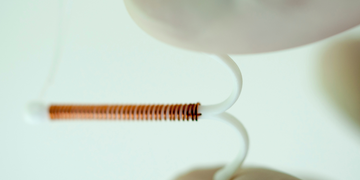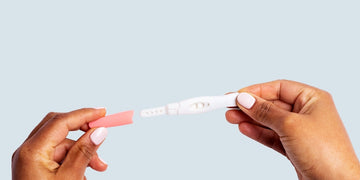What to do if your condom breaks

Using condoms can help to prevent contracting sexually transmitted infections and also prevent unwanted pregnancies. So, what do you do if a condom breaks? Don’t panic. Learn how to recognize a broken condom, what causes breaks, what you can do when a condom breaks, and how to safely and effectively use a condom.
Signs of a broken condom
How can you tell if a condom breaks? There are multiple ways that a condom can break during sex. Here’s how to notice whether a condom has broken:
- You may see a rip in the condom during sex or after
- If you notice semen leaking out, the condom probably broke (whether or not you see a tear)
- Condoms can also fully break and bunch at the base of the penis
- The condom can also come off while in the vagina; this is comparable to a condom breaking
It’s important to remember that a broken condom can increase the risk of sexually transmitted infections (STIs) or pregnancy.
What causes a broken condom?
Using a condom might seem uncomplicated, but basic errors are more common than you think. Some common mistakes include:Before use
- Forgetting to check for damage before using — tears or punctures may not be obvious
- Not storing condoms properly, or using expired condoms
- Unrolling the condom before putting it on instead of unrolling onto the penis or sex toy itself
- Forgetting to leave room at the tip for semen — some condoms have a reservoir tip to help with this
- Forgetting to remove any air bubbles
- Putting the condom on inside out and trying to flip the condom rather than throwing out the condom and using a new one
During use
- Putting on a condom after starting to have sex
- Using the wrong lubrication or no lube at all — oil-based lubricants may weaken the latex of the condom and cause it to break
- Removing the condom before finishing
- Using the same condom more than once — multiple acts require different condoms even if they follow right after one another
It’s important to remember that accidents can happen even when you use condoms correctly and take proper care of them prior to using them. Don’t feel bad if a condom breaks! — it’s bound to happen and it’s a normal part of using them.
Shop the article
Best practices for condoms
Safely and effectively using condoms will help protect you and your partner. How you open the packaging, put on the condom, and remove the condom may impact the likelihood of contracting STIs or change the chances of unintended pregnancy. Tips for safe and effective condom use include:
When purchasing
- Determine whether you’d like to use a male condom or a female condom
- Make sure you understand what the condom is made of and check the packaging to be sure it mentions protection against STIs
- If you have an allergy to latex, make sure to look for ‘latex-free’ condoms
Before use
- Store condoms in a cool, dry place — friction and heat make condoms less reliable. It’s important to remember this when considering whether to use a condom that’s been stored in a wallet for an extended period of time!
- Check the expiration date and don’t use a condom that’s beyond its date
- Examine the condom for any damage including small holes, tears, or brittleness
- Choose which type of condom you’d like to use as using two condoms at once causes friction that may lead to at least one of the condoms breaking or slipping
While using
- Use a condom for oral, vaginal, and anal sex to prevent STIs
- Never reuse a condom
- Consider using water-based lubricants since oil-based lubricants can weaken latex
Make sure to put on the condom before any sexual contact and:
- Carefully open the package — don’t use your teeth or fingernails
- Lubricate the outside of the condom if it’s not pre-lubricated
- Put the condom on an already erect penis, with the rolled rim facing out
- Remove air by gently pressing the tip of the condom (only necessary for condoms without a reservoir tip) and roll the condom down to cover the entire penis — making sure to remove air bubbles
- Hold onto the base of the condom when pulling out
- Dispose of the condom properly (in the trash, not the toilet!)
What do you do when the condom breaks?
Sometimes you can tell that a condom broke during sex. If this happens, stop immediately and get a new condom before continuing. When a condom breaks, keep in mind that the chances of getting pregnant and the risk of getting a sexually transmitted infection can be higher.
If you aren’t looking to get pregnant, you can use a form of emergency contraception to prevent pregnancy before it starts. One method of emergency contraception is the morning-after pill. The morning-after pill works to prevent pregnancy before it can start by delaying ovulation and the release of an egg for fertilization. There are two types of morning-after pills:
- Non-prescription pill formulated with levonorgestrel (sold under brand names including Plan B OneStep, My Way, AfterPill, and more) are available online and over-the-counter at most pharmacies and drugstores
- Prescription-only pill formulated with ulipristal acetate (sold under the brand name ella)
Keep Reading

How to prevent pregnancy after unprotected sex or birth control failure
Apr 27

How effective is the morning-after pill?
Apr 26

How soon can you take a pregnancy test after sex?
Apr 28












